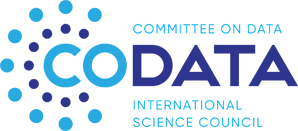Science and the Management of Physical Objects in the Digital Era
Even in the digital age, many scientific domains still rely on physical samples and specimens as a basic element for study and experimentation. Tests and analysis are conducted directly on samples, such as biological specimens, rock or mineral specimens, sediment cores, soil pedons, water quality samples, archeological artifacts or DNA samples, because they represent a wider population or a larger context. Other physical objects, such as maps or analog images are also direct objects of study, and, if digitized, may become a source of digital data. In the scientific context all of these objects need to be managed to support search, retrieval, analysis, reuse, preservation and scientific reproducibility.
There are many challenges to realizing the full potential of physical samples in support of science. These include inconsistent practices related to physical sample management and curation, the need for catalog interoperability, universal unique identifiers for objects. Science can hugely benefit from sharing information related to collection holdings.
Sharing object information including basic metadata and other analytical information will allow broad audiences to discover and access information about physical objects and can result in new discoveries and new science. Digital metadata and data derived from physical objects can be shared if the object has a universal identifier such as is being implemented by the IGSN e.V. (International Geo Sample Number – www.igsn.org) that allows unambiguous citation of a sample and linking of information in distributed data systems.”
Objectives
The goals for the Task Group on Science and the Management of Physical Objects in the Digital Era are the following :
- To facilitate international cooperation to develop harmonized approaches and best practices for physical object identification and digital curation.
- To build linkages between object repositories and museums, digital data repositories, scientific publications, and science communities.
- To enable the facilitation of object and sample identification infrastructure both at the national and international levels.
Activity Plan
For 2015
- 12–17 April 2015, EGU General Assembly 2015 Vienna, Austria.Hold a TG meeting to engage EGU attendees interested in engaging with the TG. This meeting will tentatively be held in conjunction with a meeting of the IGSN e.V.
- Develop more detailed TG roadmap document
- Explore joint activity with COOPEUS. Issue raised with COOPEUS Strategic Cooperation Board at April 2015 meeting.
- Plan workshop to be tentatively in conjunction with the RDA P6 meeting September 2015.Seek joint funding to host workshop. Workshop will have 3 goals, first to raise awareness across relevant institutions and groups about issues related to sample management and curation; second, to capture and promulgate best practices in these areas, and three, to foster interoperability among institutions that manage physical samples to promote science.
For 2016
- Training Workshop on Physical Sample Management (Asia or South Africa or South America).Target national level sample repositories and museum curators. Will work to seek complimentary funding. Workshop will have 3 goals, first to raise awareness across relevant institutions and groups about issues related to sample management and curation; second, to capture and promulgate best practices in these areas, and three, to foster interoperability among institutions that manage physical samples to promote science.
- Prepare session/s for next SciDataCon.Host TG business meeting and at least one other session on TG-related activities.
Deliverables
- Host at least one task group meeting per year.The TG will leverage potential face-to-face meetings at other events such as AGU and EGU; alternatively the TG will hold a virtual meeting. The purpose of the meeting will be for TG planning and community building.
- Set up and maintain Task Group web presence, via CODATA web site. Goal is to communicate TG activities, provide for knowledge capture, and as a recruiting tool. Start in 2015, then ongoing.
- Host one to two capacity building technical workshops. These workshops would have three main goals, first to raise awareness across relevant institutions and groups about issues related to sample management and curation; second, to capture and promulgate best practices in these areas, and three, to foster interoperability among institutions that manage physical samples to promote science. Our target would be to host one workshop in 2015 and one in 2016.
Main contacts
Kerstin Lehnert (Co-chair)
Director, Integrated Earth Data Applications & Director, EarthChem; President, IGSN e.V.
Lamont-Doherty Earth Observatory, Columbia University
Palisades, NY, 10964, USA
Tel: +1 (845) 365-8506, lehnert (at) ldeo.columbia.edu
W. Christopher Lenhardt (Co-chair)
Renaissance Computing Institute, University of North Carolina – Chapel Hill
Domain Scientist, Environmental Data Sciences and Systems
Renaissance Computing Institute (RENCI)
University of North Carolina at Chapel Hill, 100 Europa Drive, Suite 540,
Chapel Hill, NC 27517-7583, USA
Tel Office: 919-445-0480, clenhardt (at) renci.org
Colleen Strawhacker (Co-chair)
National Snow and Ice Data Center, Univ. of Colorado
Expertise: Archaeology & Social Science
Contribution: Early career scientist
colleen.strawhacker@colorado.edu
Executive Committee Liaison
Dr. Anil Kumar (India)
Executive Committee Member 2014-2016
Contact Details: a.kumar(at)ncl.res.in ; http://academic.ncl.res.in/profile/a.kumar
